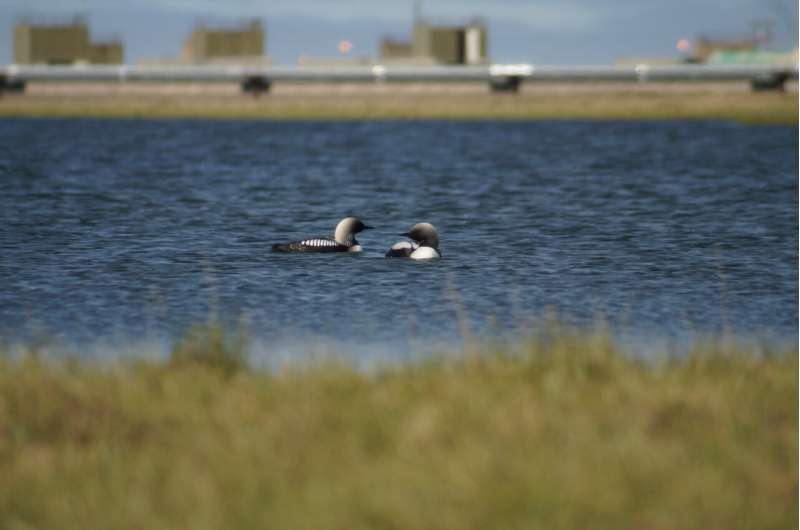This article has been reviewed according to Science X's editorial process and policies. Editors have highlighted the following attributes while ensuring the content's credibility:
fact-checked
trusted source
proofread
Study shows oil and gas infrastructure hurting nesting birds in globally important breeding area in Arctic Alaska

A new WCS-led study that analyzed 17 years of migratory bird-nesting data in Prudhoe Bay, Alaska, revealed that nest survival decreased significantly near high-use oil and gas infrastructure and its related noise, dust, traffic, air pollution, and other disturbances.
Prudhoe Bay is the site of intensive energy development and is located on the Arctic Coastal Plain, one of the most important avian breeding grounds in the world. Millions of birds nest here, with some then migrating through every state in the nation to wintering grounds in Central and South America, even Africa, with others crossing the Pacific Ocean to Russia, China, Japan, Australia, New Zealand, and Antarctica.
The findings, described in the Journal of Avian Biology, come as the U.S. recently approved the $8 billion Willow oil project—a controversial, long-term effort to drill in Alaska's largest remaining untouched wilderness in the U.S., the 36,875 square mile National Petroleum Reserve (NPR-A) west of Prudhoe Bay.
Willow's planned infrastructure borders the Teshekpuk Lake Special Area, one of five regions within the NPR-A that have been set aside from production due to significant ecological importance or subsistence value—in this case nesting waterfowl and shorebirds, as well as caribou.
Martin Robards, Regional Director of WCS's Arctic Beringia Program and an author of the study, said, "Tundra-breeding birds contend with short breeding seasons, harsh climatic conditions, and now, rapidly changing, variable, and unpredictable environmental conditions caused by climate change. Additionally, as we demonstrate here, those breeding in industrial areas are impacted by human activities too. The urgency to better understand these relationships and mitigate impacts cannot be expressed strongly enough, given widely acknowledged declines in these species, our national and global obligations to protect migratory birds, and that the potential impacts that are large."
The research team evaluated factors influencing reproductive parameters of breeding birds at Prudhoe Bay between 2003–2019. They monitored 1,265 shorebird nests, 378 passerine (songbird) nests, and 231 waterfowl nests. They found that nest survival decreased significantly nearer high-use infrastructure, which has not previously been detected in earlier short-term studies. The authors note that long-term datasets are rare in the Arctic, but they are crucial for understanding impacts to breeding birds from both climate change and increasing anthropogenic activities.
Factors associated with industrial development that may directly or indirectly affect nesting include: habitat degradation via hydrology alteration and road dust, vehicle and aircraft traffic, noise, air pollution, and increased nest predator populations associated with development, including glaucous gulls, ravens, Arctic fox, and other species.
John Calvelli, WCS Executive Vice President for Public Affairs, said, "In the face of current uncertainty, to protect migratory birds, the U.S. Government should ensure the most important bird areas continue to be set aside, as has been done through the NPR-A's Special Areas."
More information: Rebecca L. McGuire et al, Patterns in avian reproduction in the Prudhoe Bay Oilfield, Alaska, 2003–2019, Journal of Avian Biology (2023). DOI: 10.1111/jav.03075
Provided by Wildlife Conservation Society




















